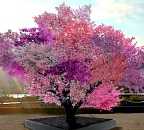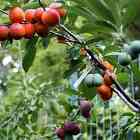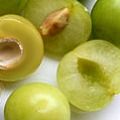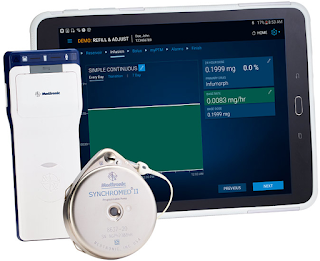Amazing invention
These amazing inventions are fruits grown to form into various shapes like Frankstein's face or Buddha.
The art of modifying, arranging, or decorating food to enhance its aesthetic appeal is known as "plating", which usually involves stacking food in various displays.
But now Chef's can add sculptured fruits and vegetables to their culinary art.
 Plastic molds are placed over immature fruit and it grows into the shape of the mold as it ripens. Originally started in Japan, growing shaped fruits and vegetables was done to conserve refrigerator space or make packaging easier. The square watermelon for example.
Plastic molds are placed over immature fruit and it grows into the shape of the mold as it ripens. Originally started in Japan, growing shaped fruits and vegetables was done to conserve refrigerator space or make packaging easier. The square watermelon for example.
But growers such as Tony Dighera in California has invested hundreds of thousands developing molds and growing processes into a technology that sculpts edible fruits and vegetables to look like just about anything you want.
Tony sells his watermelons and pumpkins wholesale for $100 a piece and the demand is greater than he can supply. He receives orders from all over the world and most of his produce (8,000 pumpkins and watermelons) are sold before they have even finished growing. "A very large vodka company wants a watermelon in the shape of a vodka bottle, which we could do," says Tony.
He has lots of plans for new products, such as growing logos, and is thinking of licensing his technology to other growers to keep up with the demand.
Sources: fruitmould.com; hort.wisc.edu ; cnbc.com Photo Credits: pumpkins - jane wells | cnbc.com ; watermelon - hort.wisc.edu ; pears - fruitmold.com
Amazing Inventions: The Forty-Fruit Tree
 Sam Van Aken is an art professor at Syracuse University who grew up on a family farm in Reading, Pennsylvania.He wanted to create an art project using an orchard as his canvas and blossoming trees as his paint.
Sam Van Aken is an art professor at Syracuse University who grew up on a family farm in Reading, Pennsylvania.He wanted to create an art project using an orchard as his canvas and blossoming trees as his paint.
However, he couldn't get funding for his idea so he decided instead to scale it down to one tree.
Van Aken started his research on creating a multi-blossoming tree by studying grafting. "I had seen grafting when I was a kid and it was something that I was always fascinated with," he said.
He quickly discovered that there were a wide variety of stone fruits such as peaches, apricots, nectarines and cherries, that were inter-compatible with each other, which meant they could possibly grow on the same tree.
 The grafting technigue to do this is called chip grafting. You take a sliver of a branch with a bud from one tree and insert into an incision of your working tree.
The grafting technigue to do this is called chip grafting. You take a sliver of a branch with a bud from one tree and insert into an incision of your working tree.
By grafting different varieties of buds, Van Aken hoped to sculpt how and when the tree would blossom and when it would grow various kinds of fruit.
When he started looking for different varieties of buds he could use - he discovered another problem - they're hard to find.
Because of the commercialization of food production many varieties of stone fruit, among other foods, are not grown because they don't have a viable shelf life for transportation and storage.
But this doesn't mean these varieties taste bad. Quite the contrary, "These varieties are so rich in their taste," says Van Aken, "The plums that I love are the greengage plums and they came to the United States from England, but were actually in France before that."
 Fortunately, Van Aken found an orchard that had hundreds of varieties of stone fruit. It belonged to the New York State Agricultural Experiment Station in Geneva, New York.
Fortunately, Van Aken found an orchard that had hundreds of varieties of stone fruit. It belonged to the New York State Agricultural Experiment Station in Geneva, New York.
This was a facility established by the New York State Legislature in 1880 to conduct agricultural science research. Since 1923 it has been operated by Cornell University and has preserved hundreds of native and antique stone fruit varieties.
With buds in hand, Van Aken began grafting a plum tree with 40 varieties of stone fruit, a process that takes about five years before the buds grow into branches.
Forty-fruit trees can be found at selected museums, private collections and community centers in the United States. Since the fruits grow and ripen at different times of the year, the forty-fruit continually yields fruit from July to October.
Van Aken is growing a forty-fruit orchard in Portland, Maine, where he plans to allow the public to purchase the fruit harvests.



Comments
Post a Comment